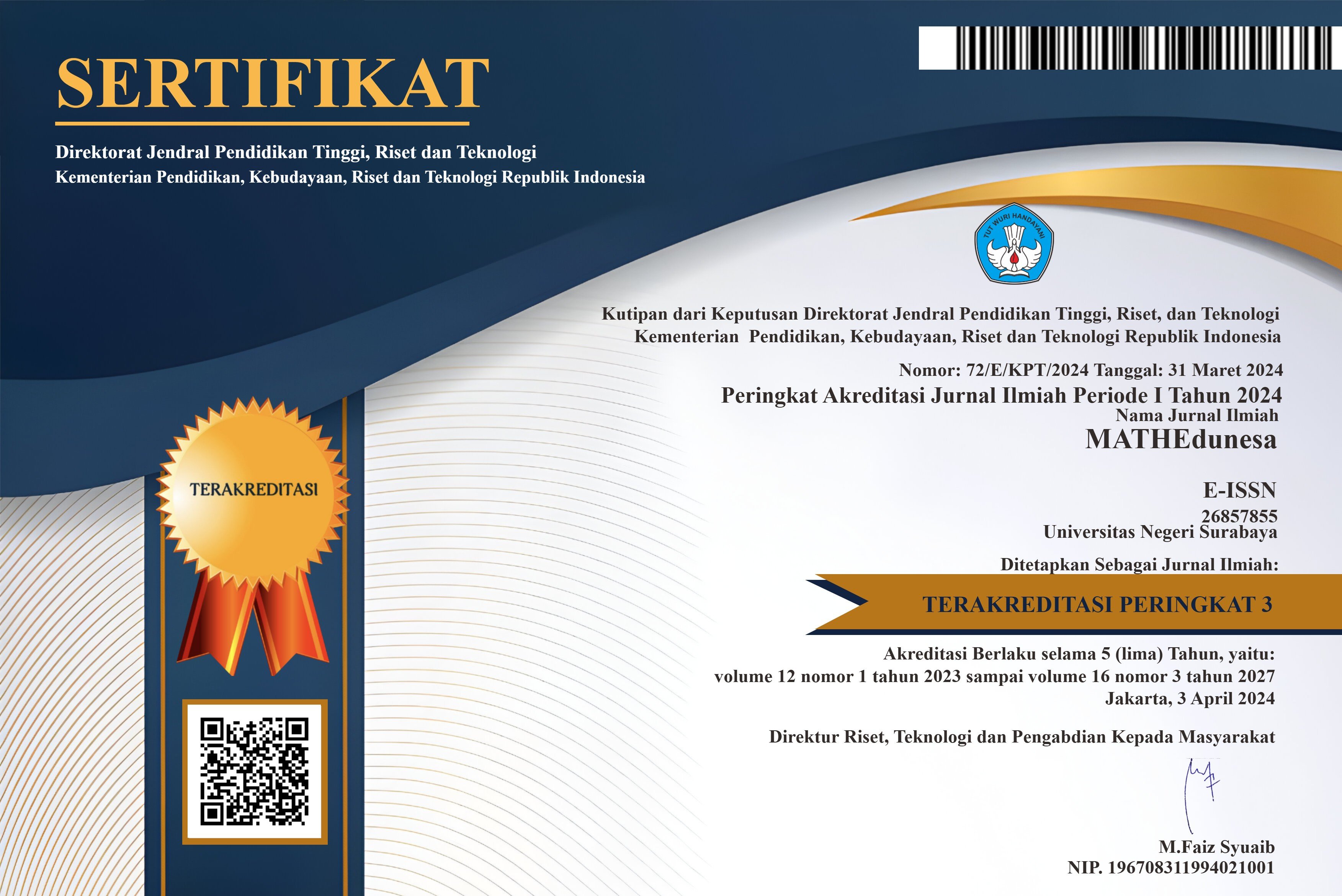Array
DOI:
https://doi.org/10.26740/mathedunesa.v13n1.p42-56Abstract
This is a qualitative research study which aims at describing the numeracy of students with three different self-efficacy levels in solving space and shape problem with second-order use of context. Data were collected from low, medium, and high self-efficacy students' written responses and semi-structured interviews on a space and shape problem. Data were analyzed using the framework of numeracy processes adopted from the mathematical processes of mathematical literacy: formulate, employ, and interpret. Students with high and medium self-efficacy did the formulation process by mentioning the mathematical aspects that are known in the problem and assuming the mathematical aspects needed in solving and making appropriate pictures as mathematical representations. On employing process students with high and medium self-efficacy explained the strategies used in solving and employing appropriate mathematical concepts at each step of completion. Students with high and medium self-efficacy interpret math answers by writing down the answers according to the context requested. But students with high and medium self-efficacy cannot show the evaluation process. Students with low self-efficacy only did first sub-indicators of the mathematical process such as identifying mathematical aspects of the problem and cannot show the next mathematical processes such as formulating, employing, interpreting, and evaluating.
Downloads
Downloads
Published
Issue
Section
 Abstract views: 103
,
Abstract views: 103
, PDF Downloads: 136
PDF Downloads: 136




